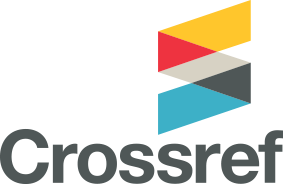تطوير نموذج ANN لتصنيف ألوان RGB بأستخدام مجموعة البيانات المستخرجة من مقياس الألوان مصنع
DOI:
https://doi.org/10.22153/kej.2023.09.003الملخص
في هذا العمل تم توظيف بيانات شفرات الالوان المكونة من الأحمر والأخضر والأزرق (RGB) والمقروءة من جهاز قياس الألوان المُصنَّع مختبريا لبناء مُصنف مقترح هدفه تصنيف الألوان باستخدام مفاهيم التعلم الآلي (ML) وذلك عن طريق تطبيق خوارزمية الشبكة العصبية الاصطناعية ( ANN). في كل عملية قياس مفردة تخرج كل قناة من القنوات الثلاثة RوG وB قيمة تتراوح بين 0-255 بت والتي تنتج شفرة لونية تمكن المصنف المقترح التنبأ بلونها باستخدام خوارزمية ANN. تم تحديد عدد فئات الالوان المتكونة من أحد عشر رمزًا من أجل تحديد الألوان المطلوب تصنيفها. بعد ذلك، تم جمع حوالي 5000 رمز لوني وإخضاعهم لعمليات التدريب والاختبار. تتم تنفيذ ANN لتدريب واختبار مجموعة البيانات التي تم إنشاؤها ومن ثم تصنيفها باستخدام مكتبات Tensorflow وKeras. أظهرت النتائج كفاءة مقبولة للمصنف المُنشأ مسبقًا والمتمثل بدقة 90% والتي تعتبر قابلة للتطبيق ومن الممكن تحسينها في المستقبل لتكون أكثر فاعلية كمصنف مقياس الألوان.
التنزيلات
المراجع
J. Sainui and P. Pattanasatean, “Color Classification based on Pixel Intensity Values,” 2018 19th IEEE/ACIS International Conference on Software Engineering, Artificial Intelligence, Networking and Parallel/Distributed Computing (SNPD), Jun. 2018, doi: 10.1109/snpd.2018.8441141.
A. A. Soofi and A. M. Awan, “Classification techniques in Machine Learning: Applications and issues,” Journal of Basic and Applied Sciences, vol. 13, pp. 459–465, Jan. 2017, doi: 10.6000/1927-5129.2017.13.76.
S. Lassri, E. H. Benlahmar, and A. Tragha, “A review of Machine Learning Algorithms for web page Classification,” 2018 IEEE 5th International Congress on Information Science and Technology (CiSt), Oct. 2018, doi: 10.1109/cist.2018.8596420.
B. S. Kusumo, A. Heryana, O. Mahendra, and H. F. Pardede, “Machine Learning-based for Automatic Detection of Corn-Plant Diseases Using Image Processing,” 2018 International Conference on Computer, Control, Informatics and Its Applications (IC3INA), Nov. 2018, doi: 10.1109/ic3ina.2018.8629507.
S. K. Behera, L. Jena, A. K. Rath, and P. K. Sethy, “Disease Classification and Grading of Orange Using Machine Learning and Fuzzy Logic,” 2018 International Conference on Communication and Signal Processing (ICCSP), Apr. 2018, doi: 10.1109/iccsp.2018.8524415.
R. S. S. Kumari and V. Gomathy, “Fruit Classification using Statistical Features in SVM Classifier,” International Conference on Electrical Energy Systems (ICEES), Feb. 2018, doi: 10.1109/icees.2018.8442331.
K. P. Panigrahi, H. Das, A. K. Sahoo, and S. C. Moharana, “Maize leaf disease detection and classification using machine learning algorithms,” in Advances in intelligent systems and computing, 2020, pp. 659–669. doi: 10.1007/978-981-15-2414-1_66.
N. Hameed, A. M. Shabut, M. Ghosh, and M. A. Hossain, “Multi-class multi-level classification algorithm for skin lesions classification using machine learning techniques,” Expert Systems With Applications, vol. 141, p. 112961, Mar. 2020, doi: 10.1016/j.eswa.2019.112961.
T. Nagata, S. Noyori, H. Noguchi, G. Nakagami, A. Kitamura, and H. Sanada, “Skin tear classification using machine learning from digital RGB image,” Journal of Tissue Viability, vol. 30, no. 4, pp. 588–593, Nov. 2021, doi: 10.1016/j.jtv.2021.01.004.
A. Mary, Z. Bilal, and Z. Saad, “Face Recognition and Emotion Recognition from Facial Expression Using Deep Learning Neural Network,” ResearchGate, Nov. 2020, [Online]. Available: https://www.researchgate.net/publication/346007138_Face_Recognition_and_Emotion_Recognition_from_Facial_Expression_Using_Deep_Learning_Neural_Network
A. H. Mary, A. H. Miry, T. Kara, and M. H. Miry, “Nonlinear state feedback controller combined with RBF for nonlinear underactuated overhead crane system,” Journal of Engineering Research 9.3A (2021). https://doi.org/10.36909/jer.v9i3A.9159
E. Arce-Medina and J. I. Paz-Paredes, “Artificial neural network modeling techniques applied to the hydrodesulfurization process,” Mathematical and Computer Modelling, vol. 49, no. 1–2, pp. 207–214, Jan. 2009, doi: 10.1016/j.mcm.2008.05.010.
J. Maitre, K. Bouchard, and L. P. Bédard, “Mineral grains recognition using computer vision and machine learning,” Computers & Geosciences, vol. 130, pp. 84–93, Sep. 2019, doi: 10.1016/j.cageo.2019.05.009.
C. Kirankaya and L. G. Aykut, “Training of artificial neural networks with the multi-population based artifical bee colony algorithm,” Network: Computation in Neural Systems, vol. 33, no. 1–2, pp. 124–142, Apr. 2022, doi: 10.1080/0954898x.2022.2062472.
D. Hemavathi and H. Srimathi, “Retraction Note to: Effective feature selection technique in an integrated environment using enhanced principal component analysis,” Journal of Ambient Intelligence and Humanized Computing, vol. 14, no. S1, p. 535, Jun. 2022, doi: 10.1007/s12652-022-04239-4.
P. V. Chandrika and K. Srinivasan, “Predicting stock market movements using artificial neural networks,” Universal Journal of Accounting and Finance, vol. 9, no. 3, pp. 405–410, Jun. 2021, doi: 10.13189/ujaf.2021.090315.
J. Meiyazhagan, S. Sudharsan, A. Venkatasen, and M. Senthilvelan, “Prediction of occurrence of extreme events using machine learning,” European Physical Journal Plus, vol. 137, no. 1, Dec. 2021, doi: 10.1140/epjp/s13360-021-02249-3.
التنزيلات
منشور
إصدار
القسم
الرخصة
حقوق الطبع والنشر: يحتفظ مؤلفو الوصول المفتوح بحقوق الطبع والنشر لاعمالهم، ويتم توزيع جميع مقالات الوصول المفتوح بموجب شروط ترخيص Creative Commons Attribution License، والتي تسمح بالاستخدام غير المقيد والتوزيع والاستنساخ في أي وسيط، بشرط ذكر العمل الأصلي بشكل صحيح. إن استخدام الأسماء الوصفیة العامة، والأسماء التجاریة، والعلامات التجاریة، وما إلی ذلك في ھذا المنشور، حتی وإن لم یتم تحدیدھ بشکل محدد، لا یعني أن ھذه الأسماء غیر محمیة بموجب القوانین واللوائح ذات الصلة. في حين يعتقد أن المشورة والمعلومات في هذه المجلة صحيحة ودقيقة في تاريخ صحتها، لا يمكن للمؤلفين والمحررين ولا الناشر قبول أي مسؤولية قانونية عن أي أخطاء أو سهو قد يتم. لا يقدم الناشر أي ضمان، صريح أو ضمني، فيما يتعلق بالمواد الواردة في هذه الوثيقة.















